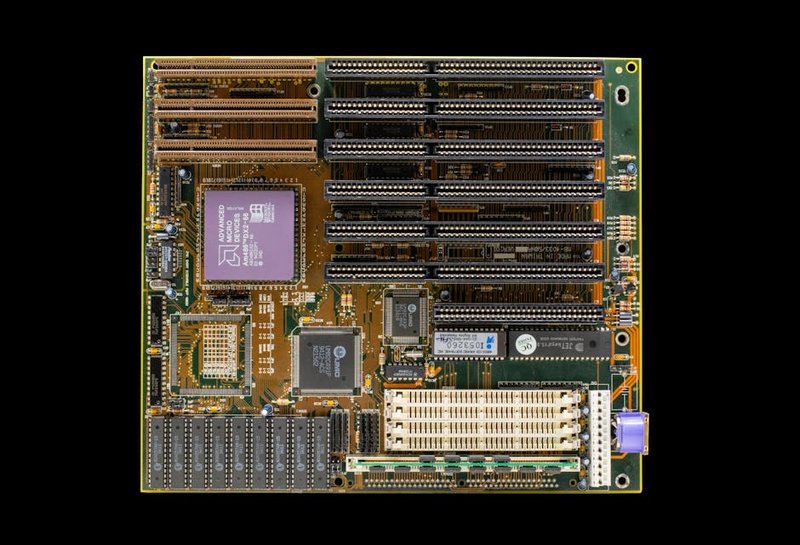The Amiga community has always been divided on what might have saved the platform during its commercial decline in the 1990s. As someone who’s followed these discussions for decades, I’m fascinated by how the debate about the Advanced Amiga Architecture (AAA) chipset continues to reveal fundamental tensions about computing philosophy. The AAA represented Commodore’s last major attempt to evolve the Amiga’s custom chipset before bankruptcy, but would it have made a difference?
Amiga – Hardware Identity vs. Computing Evolution
Reading through the forum posts, I’m struck by how passionately users like Thorham defend the specialized hardware approach that defined early Amiga systems. “It’s certainly nicer to have the Amiga as an actual Amiga instead of it being another generic machine,” they argue, suggesting that the platform’s distinct identity was tied to its custom chips.
On the opposite side, Thomas Richter presents the pragmatist’s view: “With customers identifying the machine by its dated hardware, CBM could not potentially modernize the machine because that would have meant losing their customer base.” This highlights the commercial dilemma Commodore faced—evolve beyond recognition or maintain identity at the cost of competitiveness.

Amiga – The DSP Debate: Missed Opportunities
What’s particularly intriguing is abu_the_monkey’s perspective on how Digital Signal Processors could have bridged the gap between the Amiga’s specialized approach and the industry’s direction. “The DSP could have been a gateway to move developers over to using OS routines… sort of like HLSL or CUDA,” another user noted.
This represented a middle path—maintaining hardware acceleration while creating abstraction layers that would allow software to evolve independently. The Amiga’s architecture was, in some ways, a forerunner to the GPU-focused computing we see today, but without the standardized APIs that would have made it sustainable.
The UHIRES Conundrum
The technical discussions around UHIRES (Ultra-High Resolution) highlight how Commodore struggled with implementation details even when the general direction was clear. Thomas Richter explains that “UHIRES is exactly that—the frame buffer would need to be VRAM and Angus just provides the control signals.”
This gets to a core issue: specialized hardware required specialized memory architectures, creating a complex web of interdependencies. While technically elegant, these approaches became commercially problematic as standardized components and architectures gained economies of scale that custom solutions couldn’t match.
The Amiga DNA Question
Perhaps the most profound philosophical question emerges in Gorf’s comment: “The Amiga always was defined by hardware AND software. The combination of both was the secret. That was and is its DNA.”
This raises the essential question: What makes an Amiga an Amiga? Is it the specific implementation of custom chips like Denise, Paula, and Agnus? Or is it the user experience, the multitasking OS, and the integration approach?
Those arguing against AAA often suggest that once you remove the custom chips, you no longer have an Amiga. Those supporting evolution counter that platforms must adapt their implementation details while maintaining their core philosophies.

Lessons for Modern Computing
What’s remarkable about these debates is how they foreshadowed modern computing discussions. Today’s systems have largely adopted the approach that Thomas Richter advocated—specialized hardware (GPUs, neural processors) programmed through abstraction layers (DirectX, OpenGL, Vulkan) rather than direct register access.
Yet there remains something compelling about the integrated vision of the original Amiga. As abu_the_monkey suggests, the specialized hardware approach wasn’t inherently wrong—it just needed different implementation and abstraction strategies to remain competitive.
The Business Reality
Throughout the debate, a sobering undertone emerges: technical merits often take a backseat to business execution. Thomas Richter captures this when saying, “CBM should have had a product strategy that would have attracted serious customers with some serious products.”
The AAA chipset, regardless of its technical merits, came too late in Commodore’s troubled history. With financial problems mounting and management in chaos, even the perfect technical solution might not have saved the company.
Finding Middle Ground
The most insightful perspectives in this debate recognize that binary thinking—either completely custom chips or completely standard hardware—misses the point. Gorf notes that even in the original Amiga, “the CPU was of course never exclusive or custom.” The platform always mixed standardized and custom elements.
A viable path forward might have been maintaining the Amiga’s multitasking OS and user experience paradigms while gradually evolving the hardware implementation details. This wouldn’t have been “abandoning” the Amiga’s identity but evolving it in response to market realities.
The AAA debate ultimately reveals more about computing philosophy than about specific technical implementations. It asks us to consider what defines a platform’s identity and how that identity can evolve without being lost. These questions remain relevant as we watch modern platforms navigate similar tensions between standardization and differentiation, between optimization and compatibility.



